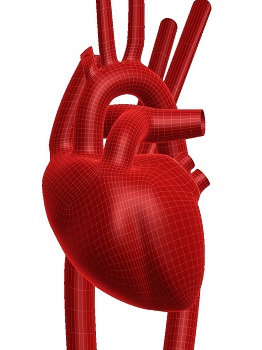
The Hadassah Medical Organization has been awarded a €3.69 million ($4 million) grant from the European Union (EU) to begin clinical trials with its Hadassah-developed innovative radioactive imaging substance that may reduce the need for exploratory cardiac catheterizations.
The invention of this imaging agent heralds a new stage in the diagnosis of cardiovascular disease, the leading cause of death in the world. Currently, millions of diagnostic heart catheterizations are performed each year in the United States; less than half of them reveal heart problems that require further intervention.
Currently, Hadassah is the only hospital in the world to have this PET/CT cardiac imaging “tracer,” pioneered by Prof. Eyal Mishani, head of Research and Development at Hadassah and its Cyclotron and Radiochemistry Unit, along with his team in the Radiochemistry Unit and Hadassah Cardiologist Prof. Chaim Dannenberg. With this imaging tracer, the cardiologist can more specifically diagnose heart blockages. As Prof. Mishani explains: When this tracer is injected into the patient, it accumulates in the heart, enabling the physician to measure blood flow in absolute values and pinpoint the location of problems.”
The grant is part of the EU’s Horizon 2020 program and the Hadassah tracer was one of three funded projects from among 110 top applicants in the health field. Prof. Mishani notes: “The grant is an important recognition by the European Commission for our work in translational medicine, our ability to move from the laboratory to the bedside.”
The tracer was exclusively licensed by Hadasit, Hadassah’s technology transfer company, in 2013 to the grant applicant, Synektik S.A., a Poland-based leading provider of innovative solutions for medical imaging in Europe. This first-in-human clinical trial is slated to begin this year. Hadassah already has the approval of both its Helsinki Ethics Committee and Israel’s Ministry of Health to launch the trial.
The cyclotron, a piece of equipment that requires a unique infrastructure, including a bunker to shield it, can synthesize radioactive atoms that are incorporated into biological compounds to create imaging agents which are then used in conjunction with PET and CT scanning. Patients typically receive an injection of a small quantity of the tracer and then a special camera of the PET scanner detects how the body processes the tracer as it illuminates the heart. In this way, specific heart blockages in specific locations are highlighted.
While few hospitals have a cyclotron, Hadassah has two. The first was donated in 1994; the second, in 2010.
